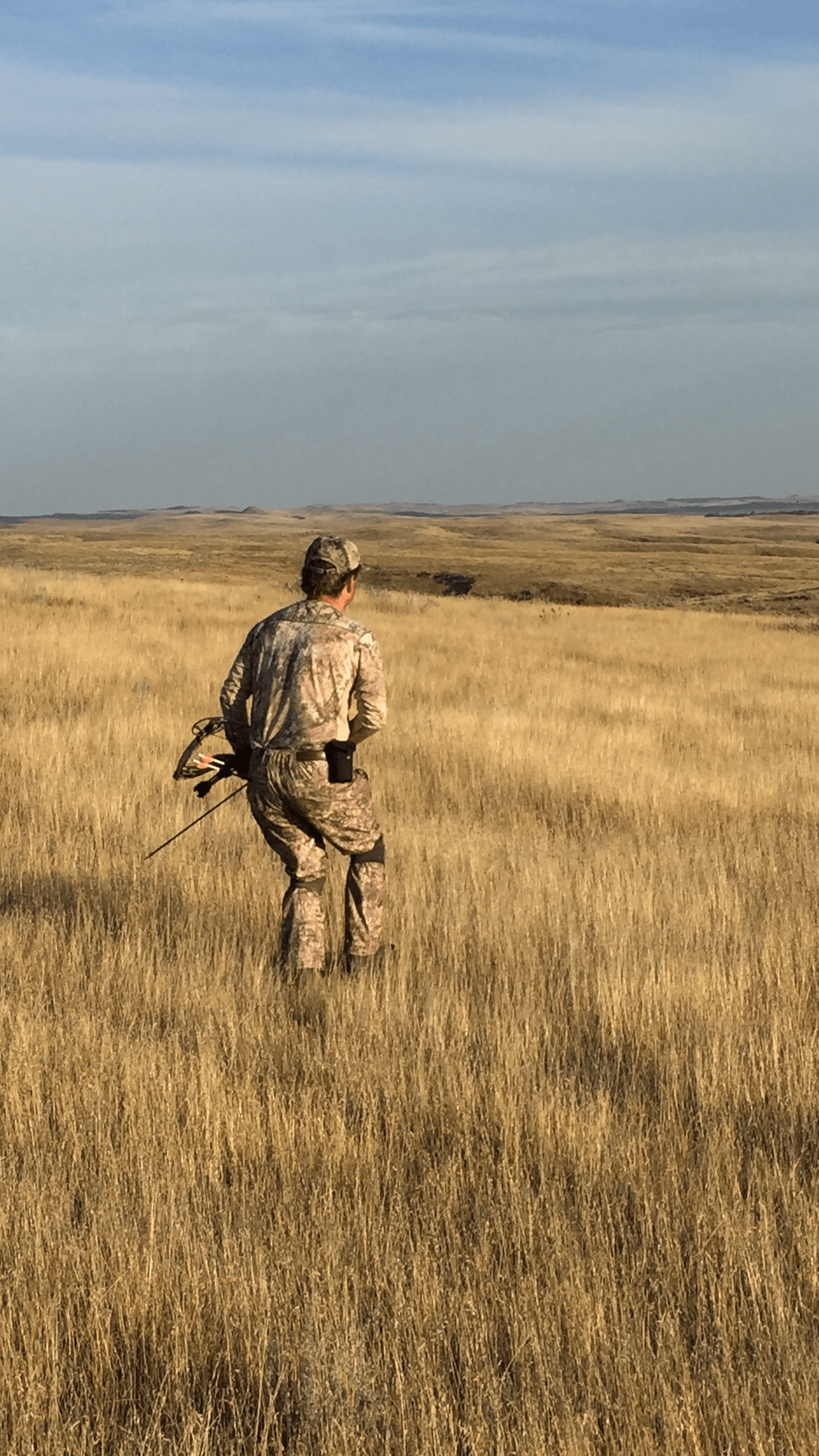
The rolling prairie provides a place for wildlife, hunters and so much more. Under the Meadowlark Initiative, the state of North Dakota looks to preserve native prairie and restore areas that once were. DEO Photo by John Bradley.
By John Bradley
As winter slowly starts to melt into spring, hunters will take to the fields for turkey, farmers will start planting their crops, and ranchers will turn out their cattle on fresh grass. It’s a cycle that happens every year and one that plays a critical role in the economy and quality of life for North Dakotans. When the three work together, we see abundant wildlife and game, strong economies, and thriving communities where future generations want to continue their family traditions.
Healthy prairies play a vital part of that cycle. The prairie is an extremely valuable resource that carries enormous benefits for both people and wildlife. Plants, insects, and various critters serve as food sources for nesting birds, and grasses are available for grazing and bedding areas for our big game populations. It’s easy to see the value prairies bring to people and communities. We benefit through clean air, clean water, good soil, and income from ranching, hunting, recreation, and tourism. Every year, the prairies are responsible for bringing millions of dollars into our state.
Unfortunately, our prairies are at risk. We are seeing trends that raise the alarm about the future of North Dakota’s prairies. Seventy-two percent of our prairies have been converted to other uses such as cropland, urban expansion, and energy development, but it’s not black and white. All these things play an important role in North Dakota’s economy, but left unchecked and unmitigated, they can do a lot of harm. For instance, we’ve seen a 53 percent loss in grassland birds since 1970 and 1 out of 4 bumblebee species are at risk of extinction within the next 50 years. The North Dakota Game & Fish Department (NDG&F) has listed over 45 species that are linked to grassland ecosystems and are in decline. Outside of wildlife, our water, soil, energy, food, communities, and our outdoor heritage are all intertwined with the fate of the prairies.
Enter the Meadowlark Initiative, named after North Dakota’s state bird, the iconic yet also declining western meadowlark. With a goal of promoting and creating healthy, thriving grasslands, the initiative looks to secure a future for healthy wildlife populations from insects to big game, productive ranching operations and resilient communities. A program designed to have “something for everyone,” the NDG&F created this statewide strategy that teams up willing landowners, conservation groups, agencies, scientists, and others in a collective effort to save North Dakota’s native grasslands.
Through the Meadowlark Initiative, producers can plant marginal cropland back to diverse native perennial grasslands for grazing. Through cost-sharing, landowners can establish grass and install grazing infrastructure, such as fencing and water. During the first three years of grass establishment, producers are also eligible to receive rental payments as the land transitions from cropland to grazing land. The Meadowlark Initiative also looks to work with the energy industry to develop the state’s vast resources, while having minimal impact to grasslands and by offsetting residual impacts of past development.
You don’t have to own a farm, a ranch, or hundreds of acres to help grassland species. You don’t even have to be a hunter. If you are a landowner or producer, the Meadowlark Initiative offers financial and technical assistance aimed at supporting conservation through working grasslands. If you are a sportsman or woman or just like the quiet that the prairie provides, donating or volunteering your time to your favorite North Dakota based conservation group will help. We all have an obligation to work together to pass on abundant wildlife and game, strong economies, and resilient communities to the next generation. The Meadowlark Initiative aims to do just that.
John Bradley is a Dakota Edge Outdoors contributing writer and the Executive Director of the North Dakota Wildlife Federation, online at northdakotawildlife.org.
